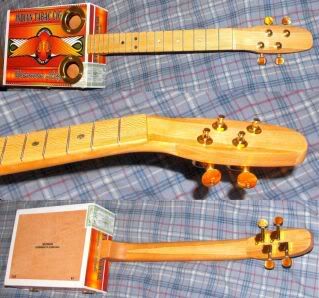cornfedgroove
Well-known member
sooooooo...whats the theory on sound holes. Obviously a big circular hole in the center is pretty standard...McPhereson has there fancy hole in the top, upper bout. Aside from that you have f-holes on mandolins and violins etc, but you also have an instrument like the tambouritza with several tiny holes to open it up for sound.
I've had some cool cigar boxes that has a nice design in the wood that I dont wanna jack up with a central hole...an off-center hole in the corner wont do it justice, its too late to scroll f-holes (I'm impatient..sue me), so I was considering multiple small holes...not too many but enough for sweet, functional simplicity.
whats the theory on this
I've had some cool cigar boxes that has a nice design in the wood that I dont wanna jack up with a central hole...an off-center hole in the corner wont do it justice, its too late to scroll f-holes (I'm impatient..sue me), so I was considering multiple small holes...not too many but enough for sweet, functional simplicity.
whats the theory on this

